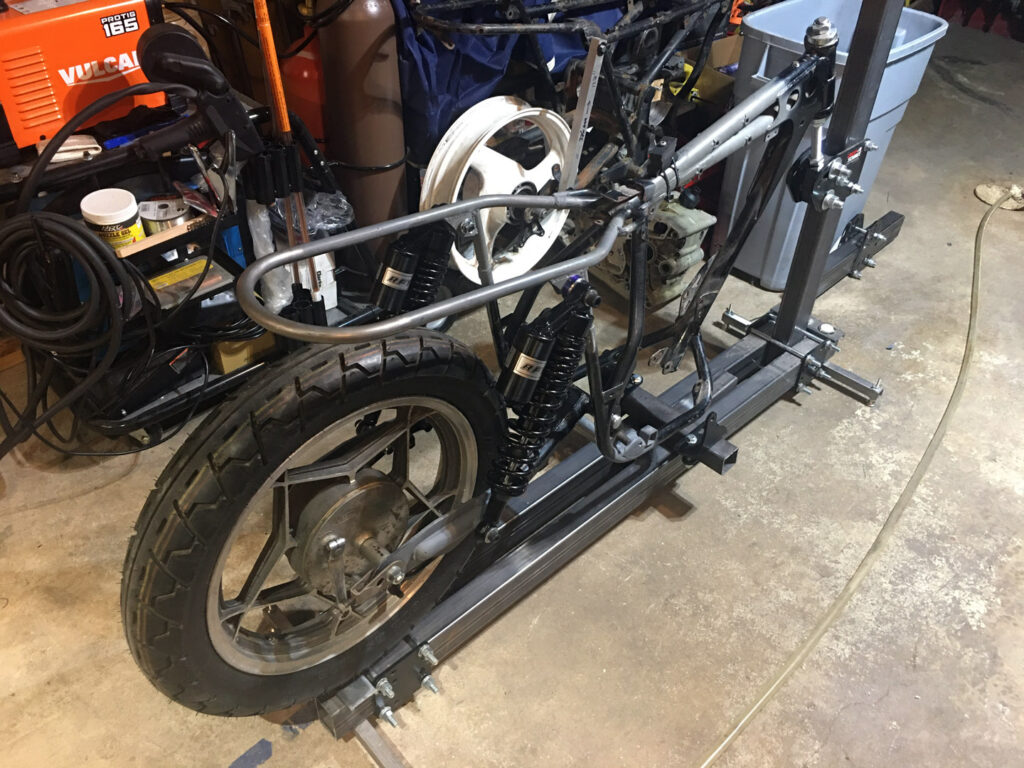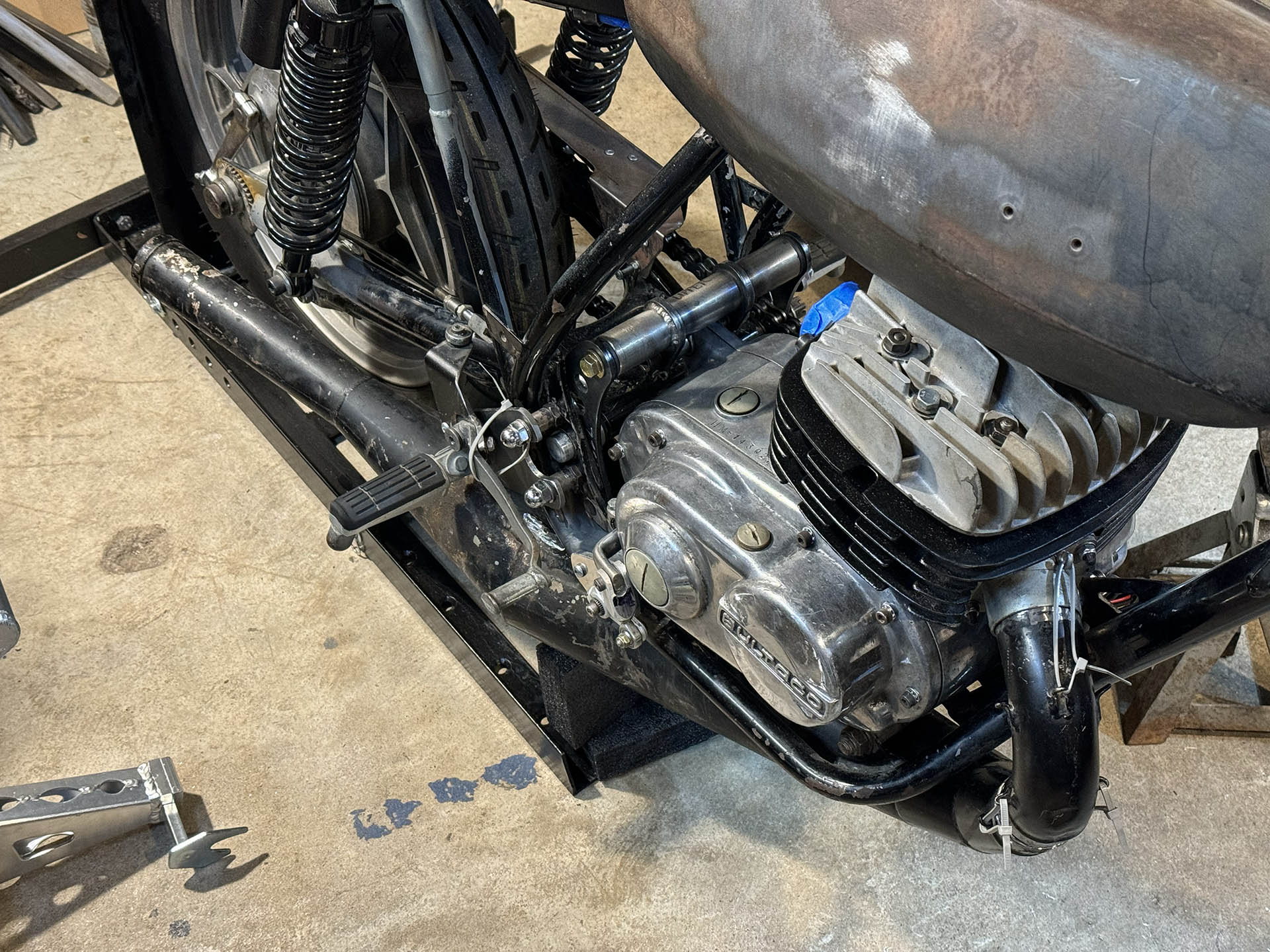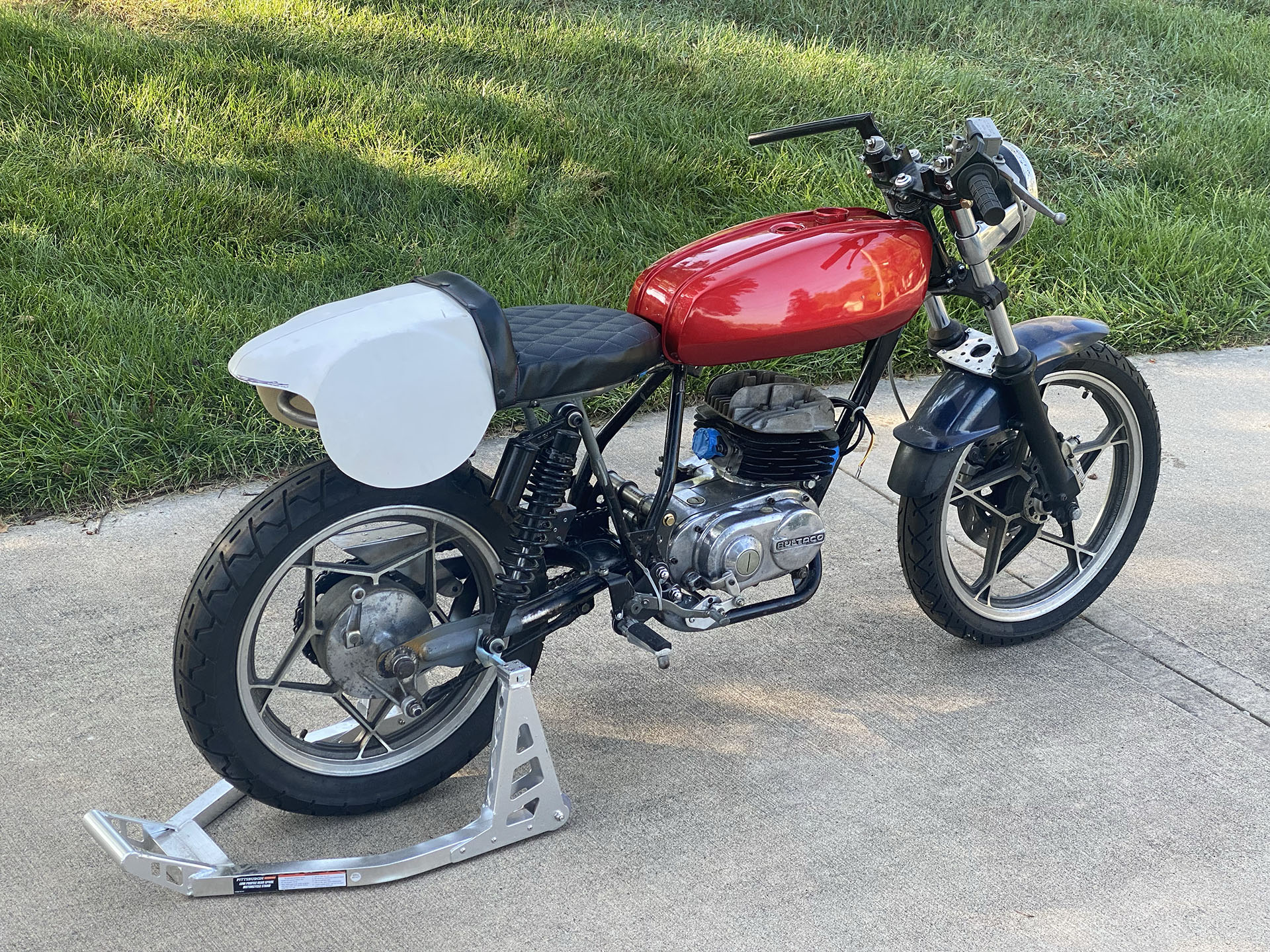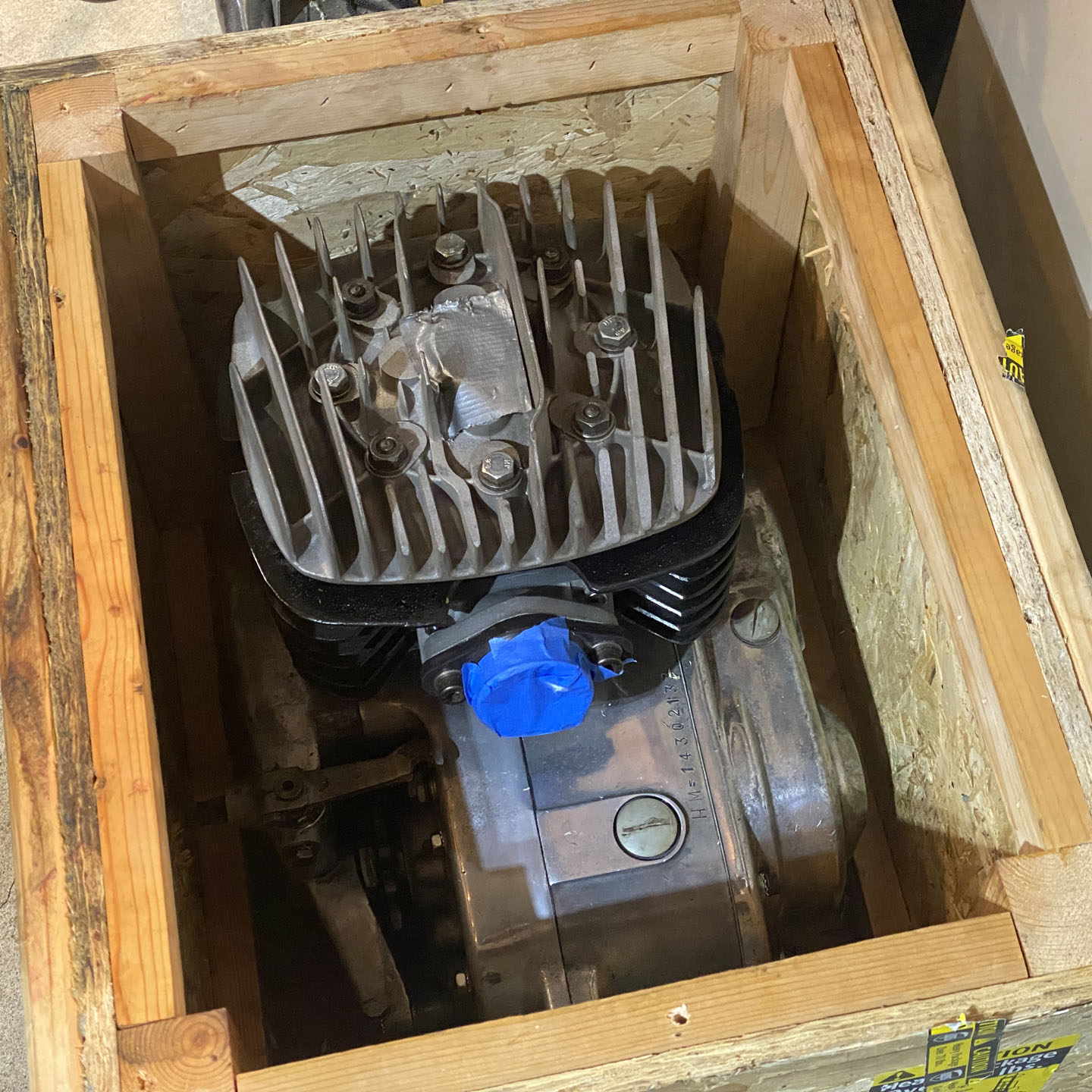One of the big challenges of this project has been trying to accurately locate of the rear wheel. Fortunately, as far as the frame itself goes, the only truly critical relationships are between the steering headstock and the swingarm pivot: when the steering head is perpendicular to the y axis (that is, centered and vertical), the swingarm must be parallel to the y axis (horizontal and transverse). The rest of the equation–getting the rear wheel centered and in-plane–is up to the swingarm and axle. So, this should be easy, right? Well, determining the effective center line of the bike is harder than it sounds at first blush, when working with chassis components that were never designed to match up to each other. There are so many possible reference points floating in space, inches or feet away from each other, usually with something else in the way. The inherent loose tolerances of high-volume Japanese production and low-volume Spanish production mean that there are very few relationships that can be assumed accurate, even if they are nominally symmetrical or theoretically in alignment. The jig has helped a bunch, but still, fractions of a degree inaccuracy in projecting a datum line will provide wildly varying and useless measurements at the other end, which is exactly what I got a lot of the time. All along the way, trying to fabricate parts to complete an incomplete bike based on these measurements has involved a lot of guesswork and “we’ll sort it out later” moments. Well, the time for deferring those determinations finally ran out on me. I finally had to assemble the whole rear of the chassis and try to figure out exactly what I had.

In order to hedge my bets, I tried to employ as many different but overlapping methodologies as possible. When I installed the swingarm in the frame, I located the swingarm as accurately as I could, so that the opening for the wheel and the rear damper mounts would be reasonably well centered within the frame. I then tried to measure the rear wheel independently of the frame, calculating the offset of the hub (technically the faces of the brake panel and sprocket carrier) from the center of the rim/tire. Based on that, I scrounged up the appropriate spacers and assembled the wheel, swingarm, and frame. Looking at the bike from the rear, my eyeball assessment was that the tire’s center groove looked just slightly off center to the left, but with so much of the frame welded by hand back in 1977 Barcelona, it was impossible to know what was just optical illusion. So I got out my long metal rule, my carpenter’s square, and a laser level and went to work. After measuring as many different ways as I can, I’ve concluded with a modicum of confidence that the wheel is off to the left about 3 mm. I’m going to machine 3 mm off the spacer on the right (visible in the photo), and make up a 6 mm longer spacer on the left, since I had added a 3 mm shim washer on that side to get the width I needed. At that point, my chassis geometry will be as good as will ever matter, and I’m going to call that good enough.


